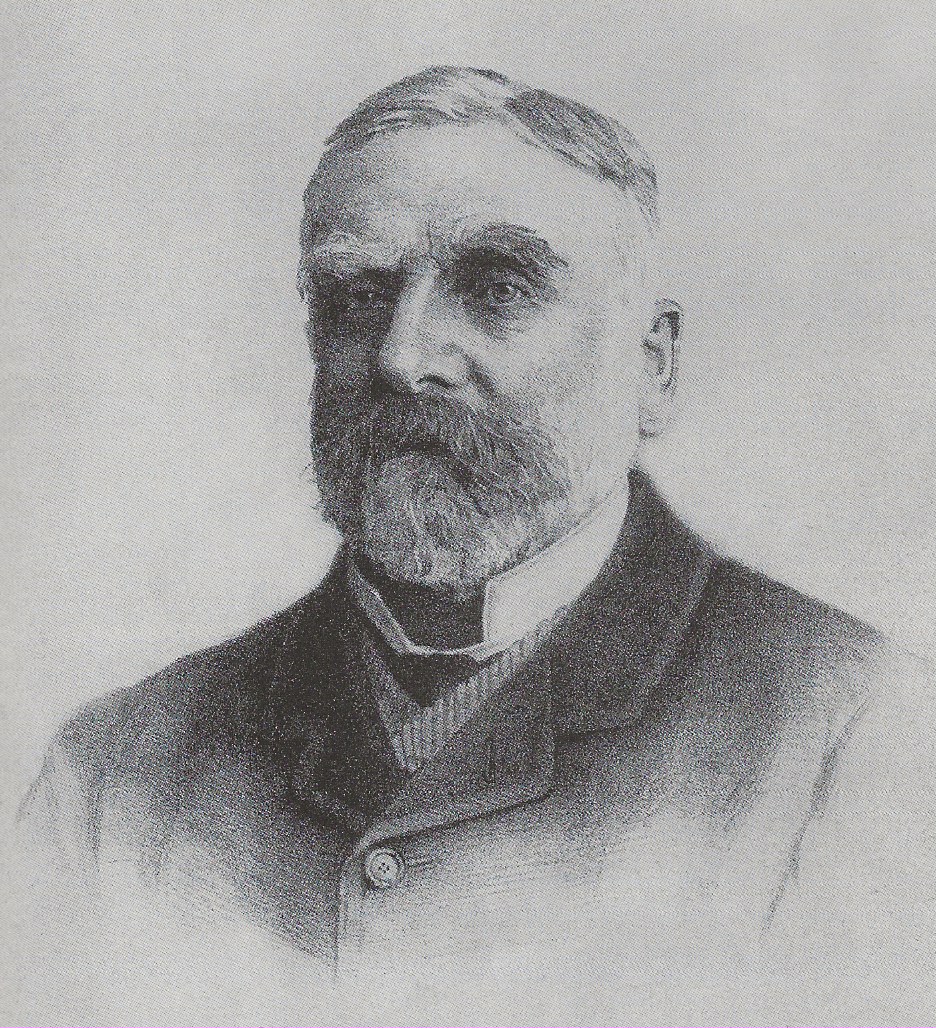George Arthur Ferguson (17 March 1835 – 15 December 1924) was the sixth and final laird of the Pitfour estateEstate in the Buchan area of north-east Scotland, home to James Ferguson of Badifurrow, the first Laird of Pitfour, and two generations of his family. in Aberdeenshire. He served in the military, rising to the rank of Lieutenant Colonel, but retired from his military career at a young age. Like his father, he lived a life of indulgence despite facing financial difficulties. As his debts accumulated the substantial Pitfour estate was decimated in failed attempts to fund his lifestyle.
Ferguson was sequestrated in 1909,[a]Sequestration is the legal process by which the income from an estate is diverted from the owner to a third party.[1] and died in December 1924.
Family
George Arthur Ferguson was the youngest child and only son of George FergusonScottish naval officer and Tory politician; also known as "The Admiral" or "The Sailor" to differentiate him from his father., the 5th laird of Pitfour, and his second wife Elizabeth Jane Rowley, the eldest daughter of Clotworthy Rowley, 1st Baron Langford and a niece of the Duke of Wellington.[2][3][4] He was born on 17 March 1835 while his parents were living in London.[4][b]Buchan gives the year of birth as 1834 on page 43 but states 1835 on page 47;[5] a photograph of Ferguson’s tombstone shows 1835.
Information regarding his education is sketchy with some inaccurate details circulated. Newspaper articles claimed he attended Eton and Sandhurst but the only confirmed record is his attendance at Harrow for one year, January to December 1850. Most of his youth was spent at Pitfour.[6]
In February 1861 he married Nina Maria Hood (4 September 1841[7] – June 1923[8]), the eldest daughter of Alexander Nelson Hood, 1st Viscount Bridport.[7][9] The couple were betrothed in 1860; the marriage ceremony took place at Windsor Castle in the Chapel Royal. A large dowry made up of money and shares was paid to Ferguson by Nina’s parents.[7]
Shortly after their marriage Ferguson was posted to Canada where the first two – both boys – of their six children were born in 1862 and 1863. Two children, a boy and a girl, were born in London in 1864 and 1867 followed by another boy and a girl at Pitfour in 1873 and 1877.[10]
The couple had an itinerant lifestyle living in several different London houses until Ferguson inherited the Pitfour estate after the death of his father in 1867.[7]
Career
A newspaper article from 1929 indicates Ferguson acted as Queen Victoria’s aide at Buckingham Palace from 1855 until 1860; this is not supported by official records although he is known to have had connections with the Palace.[7] Ferguson served in the Grenadier Guards, rising to the rank of captain. Promotion to Lieutenant Colonel was secured on 18 July 1862 during his posting in Canada which dated from towards the end of 1861 until 1864 when they returned to London.[7][9] He secured the rank of captain on 30 November 1855 after undertaking active service in Crimea. Queen Victoria presented him with the Crimea medal commemorating the siege of Sebastopol although this award was made to all soldiers who participated but the presentation was not usually personally made by the sovereign.[6][c]During the 19th century, military credentials could be purchased.[6]
Like his father, he retired from the military while in his twenties to lead a life of leisure.[11] He officially resigned his commission on 7 August 1867 less than six months after he inherited Pitfour despite having knowledge of the dire financial straits his father had left the estate in.[12]
Pitfour
At the height of its development the estate had occupied 50 square miles (130 square kilometres), and was valued at £30 million.[13] When the sixth laird inherited it the estate was mortgaged for £250,000, despite the sale of a number of the lands originally included in it.[14] Together with what remained of the estate Ferguson received a lump sum of £100,000 supplemented by an annual income of £4,000.[12]
The new owners visited the mansion soon after they inherited it then spent the next twelve months commissioning renovations before it gradually became the main family residence. At the end of 1875, dry rot was discovered in the mansion rendering it uninhabitable for a year while repairs were carried out. Assets continued to be sold off to fund extravagances like vacations in France in 1880 and to cover the couple’s lavish lifestyles and gambling habits. Relationships with local villagers soured as disagreements arose concerning increased rents and a lack of maintenance; farmland showed the signs of neglect and was in a bad state making it a poor prospect for anyone to rent at the excessive fees demanded by Ferguson so much of the land was unworked.[12]
By 1883 the estate was listed as being just over 23,000 acres (93 square kilometres) with an income of £19,938.[15] By 1905 the couple’s combined fortune was assessed at a total of less than £10,000. Debts were still mounting and by 1909 a trust deed was registered with the entirety of what remained of the estate put up for sale.[16] It remained unsold until after the First World War, eventually being purchased by a speculator in 1926.[8]
Death and legacy
On 15 December 1924, Ferguson died in Sussex at the residence of his son-in-law. He is buried in the same grave as his wife, who pre-deceased him, at Luton.[8]
Notes
| a | Sequestration is the legal process by which the income from an estate is diverted from the owner to a third party.[1] |
|---|---|
| b | Buchan gives the year of birth as 1834 on page 43 but states 1835 on page 47;[5] a photograph of Ferguson’s tombstone shows 1835. |
| c | During the 19th century, military credentials could be purchased.[6] |

